Kittens are undeniably adorable at any stage of their young lives. Understanding a kitten’s age is crucial to providing the right care as their needs change rapidly as they grow. Determining a kitten’s age can sometimes be challenging, but our comprehensive kitten progression guide, featuring Darling the kitten and his siblings, is designed to assist you in this process. This guide will help you understand the different stages of kitten development, ensuring your feline friend, be it a Cat Kitten Kitten, receives the best possible care.
Crucial First Step: Never Separate Kittens From Their Mother. If you encounter kittens without their mother in sight, observe from a distance for a few hours. Mothers often leave briefly to find food. If the mother returns, it’s best to Leave Them Be®, as the mother cat provides the best care for her kittens.
Learn what to do when you find kittens outdoors. Explore our Kitten Guide for more detailed information on kitten development and care.
Newborn Kitten: Days 1-7
Newborn kittens are entirely dependent and vulnerable. Their eyes are sealed shut, and their ears are folded down. A newborn cat kitten kitten cannot stand, regulate its body temperature, or feed itself. They rely completely on their mother for warmth, nourishment, and care. This stage is critical for survival, and maternal care is paramount.
Discover more about newborn kittens in our detailed Kitten Guide
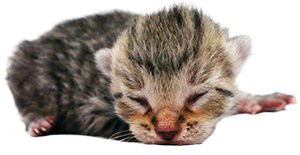 Darling as a newborn kitten, completely helpless and relying on his mother.
Darling as a newborn kitten, completely helpless and relying on his mother.
Week 1: The Helpless Stage for a Cat Kitten Kitten
In their first week of life, kittens, including our Darling, are in a completely helpless phase. They are born blind and deaf, unable to maintain their body heat or eliminate waste independently. A tiny cat kitten kitten at this stage typically fits in the palm of your hand, weighing a mere 3-5 ounces. Like Darling and his siblings, these little ones depend entirely on their mother—or a dedicated human caregiver—for protection, warmth, and nutrition. Despite their vulnerability, even week-old kittens can purr and make distress calls, communicating their needs. Their days are mostly spent sleeping (around 90% of the time) and eating (the remaining 10%), crucial activities for growth and development.
Want to deepen your understanding of week-old kittens and learn how to provide the best care?
Explore our Kitten Guide for detailed advice
 Darling as a newborn kitten, completely helpless and relying on his mother.
Darling as a newborn kitten, completely helpless and relying on his mother.
Day 1 Kitten: Utter Dependence
At just one day old, kittens are immobile. Their eyes and ears are still closed and folded. A one-day-old cat kitten kitten requires around-the-clock attention, including bottle feeding every two hours if the mother cat is not present. This intensive care ensures they receive the necessary nutrients to survive these fragile first days.
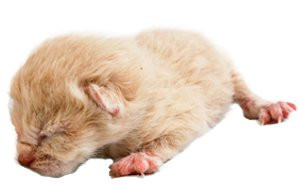 Denby, a day-old kitten, showcases the typical closed eyes and folded ears of a newborn.
Denby, a day-old kitten, showcases the typical closed eyes and folded ears of a newborn.
Day 3 Kitten: Developing Senses
By day three, subtle changes begin to occur. Noticeably, the kittens’ ears are just starting to unfold, although their eyes remain closed. Their senses of smell, hearing, and taste are slowly beginning to develop. While still reliant on their mother, a three-day-old cat kitten kitten is gradually becoming more receptive to the world around them.
 Denby, a day-old kitten, showcases the typical closed eyes and folded ears of a newborn.
Denby, a day-old kitten, showcases the typical closed eyes and folded ears of a newborn.
Day 6 Kitten: Eyes Peeking Open
Approaching the end of the first week, around day six, kittens start to show more activity. They may begin to wiggle around more independently, and a significant milestone is reached as their eyes start to open. The world begins to come into view for a six-day-old cat kitten kitten, marking the start of visual development.
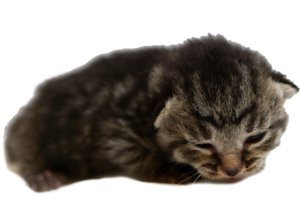 Cordory at six days old, with eyes just beginning to open, a sign of progressing development.
Cordory at six days old, with eyes just beginning to open, a sign of progressing development.
Week 1 Kitten: Awareness Dawns
At one week old, kittens like Darling, Denby, Corduroy, Tweed, and Wembley are increasingly aware of their surroundings. Their eyes are almost fully open, though their vision is still blurry and unfocused. They have achieved a significant growth milestone, typically doubling their birth weight to around eight ounces. Around this time, at about seven days old, a kitten’s ears will fully unfold, further enhancing their sensory perception. This week marks a transition from complete helplessness to a gradual engagement with the world for a week-old cat kitten kitten.
 Cordory at six days old, with eyes just beginning to open, a sign of progressing development.
Cordory at six days old, with eyes just beginning to open, a sign of progressing development.
Week 2: Exploration Begins for the Cat Kitten Kitten
During their second week, kittens like Darling, Denby, Corduroy, Tweed, and Wembley continue to develop rapidly. By the end of this week, their ears are almost completely uncurled, giving them improved hearing. They also start to attempt crawling, though movements are still uncoordinated. Despite these advancements, a two-week-old cat kitten kitten remains entirely dependent on a caregiver—whether their mother or a human—for feeding and assistance with waste elimination.
Interested in learning more about caring for kittens during their second week of life?
Visit our Kitten Guide for comprehensive tips
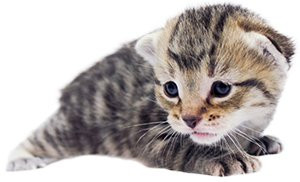 Darling at week two, showcasing fully opened blue eyes and taking his first unsteady steps.
Darling at week two, showcasing fully opened blue eyes and taking his first unsteady steps.
Day 8 Kitten: Closeness and Warmth
At eight days old, kittens primarily snuggle together for warmth and comfort. They seldom stray far from their mother, their nest, or each other. This close physical contact is vital for maintaining body temperature and provides a sense of security for an eight-day-old cat kitten kitten.
 Darling at week two, showcasing fully opened blue eyes and taking his first unsteady steps.
Darling at week two, showcasing fully opened blue eyes and taking his first unsteady steps.
Day 9 Kitten: Blue Eyes Gaze
The eyes of a nine-day-old kitten are a striking blue. This blue eye color is characteristic of young kittens and will persist for the initial weeks. The permanent eye color of a cat kitten kitten might not fully manifest until they are around two months old.
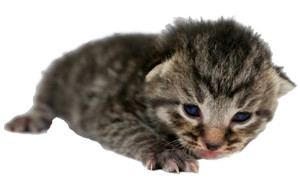 Corduroy on day nine, highlighting the distinctive bright blue eyes of a young kitten.
Corduroy on day nine, highlighting the distinctive bright blue eyes of a young kitten.
Day 12 Kitten: Venturing Out
By twelve days old, kittens are gaining confidence and becoming more comfortable venturing short distances from their mother and nest. While still wobbly on their feet, this exploration marks the beginning of their interaction with their immediate environment for a twelve-day-old cat kitten kitten.
 Corduroy on day nine, highlighting the distinctive bright blue eyes of a young kitten.
Corduroy on day nine, highlighting the distinctive bright blue eyes of a young kitten.
Week 2 Kitten: Interaction and Senses
As two-week-old kittens like Darling, Denby, Corduroy, Tweed, and Wembley become increasingly aware, they begin to interact more with their siblings. Their sense of smell is also developing, leading them to react to unfamiliar scents or sounds, sometimes with hisses. They may even start kneading, though their claws are not yet retractable. Despite these developments, a two-week-old cat kitten kitten still needs its mother’s presence and care.
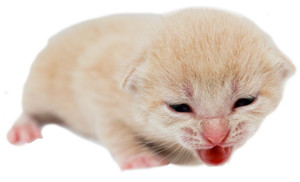 Denby at two weeks old, demonstrating increased awareness and interaction with surroundings.
Denby at two weeks old, demonstrating increased awareness and interaction with surroundings.
Week 3: Physical Development and New Foods for the Cat Kitten Kitten
By the third week, significant physical developments are noticeable in kittens. It becomes easier to distinguish between male and female kittens. For example, in this litter, Darling, Denby, Corduroy, and Tweed are males, while Wembley is female. Their baby teeth start to emerge, and their walking becomes more coordinated. This is also the time when you can begin introducing a litter box and wet food to a three-week-old cat kitten kitten, preparing them for more independence.
By the end of the third week, Darling is actively playing with his siblings and becoming more mobile, showcasing his rapid development.
Interested in learning more about caring for kittens during their third week?
Visit our Kitten Guide for detailed advice
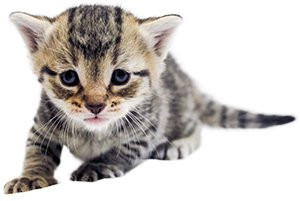 Darling at week three, actively playing with siblings and showcasing increased mobility.
Darling at week three, actively playing with siblings and showcasing increased mobility.
Day 15 Kitten: Sleep Still Dominates
Even at fifteen days old, kittens still spend a large portion of their day sleeping. While they are becoming more active, sleep remains crucial for their growth and development. A fifteen-day-old cat kitten kitten is in a phase of balancing increased activity with essential rest.
 Darling at week three, actively playing with siblings and showcasing increased mobility.
Darling at week three, actively playing with siblings and showcasing increased mobility.
Day 16 Kitten: Motor Skills Emerge
At sixteen days old, kittens are starting to engage in play and develop their fine motor skills. These early play behaviors are essential for their physical and social development, helping a sixteen-day-old cat kitten kitten learn coordination and interaction.
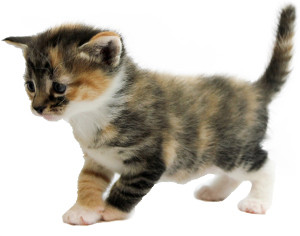 Wembley at sixteen days old, up and about, developing motor skills through early play.
Wembley at sixteen days old, up and about, developing motor skills through early play.
Day 20 Kitten: Independent Elimination
Around twenty days old, kittens reach a significant milestone: they can start to eliminate waste on their own, without needing stimulation from their mother or a caregiver. This development means it’s time to begin litter box training for a twenty-day-old cat kitten kitten, encouraging independent hygiene habits.
 Wembley at sixteen days old, up and about, developing motor skills through early play.
Wembley at sixteen days old, up and about, developing motor skills through early play.
Week 3 Kitten: Introducing Solid Food
By three weeks old, if you are bottle-feeding, you’ll notice kittens are drinking more formula per feeding but feeding less frequently, perhaps four to five times a day. At this age, it’s appropriate to start introducing solid food, beginning with wet food, and you can try mixing it with kitten formula to ease the transition. By the end of week three, a three-week-old cat kitten kitten will weigh close to 15 ounces and walk with much less wobbling.
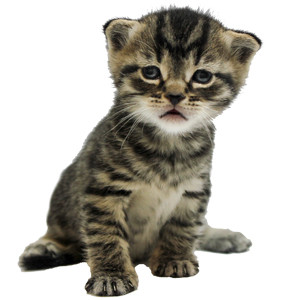 Tweed at three weeks old, showcasing more coordinated movement and readiness for solid food.
Tweed at three weeks old, showcasing more coordinated movement and readiness for solid food.
Week 4: Socialization and Play for the Cat Kitten Kitten
By four weeks, kittens like Darling have grown remarkably. They are now steady on their feet and actively playing with their siblings, toys, and even people. At this stage, a four-week-old cat kitten kitten starts to resemble a miniature, fluffier version of their mother. They show increased curiosity about the world around them and are more interactive, making this an ideal time to begin socializing them.
Want to learn more about socializing and caring for four-week-old kittens?
Visit our Kitten Guide for detailed advice
Day 22 Kitten: Sturdy and Furry
At twenty-two days old, you’ll observe that kittens’ ears are fully extended, and they hold themselves up well. They are sturdy and much more coordinated. Their fur is also filling out, and you might start to discern whether they will have short, medium, or long fur. This particular litter seems to be mostly short-haired cat kitten kittens.
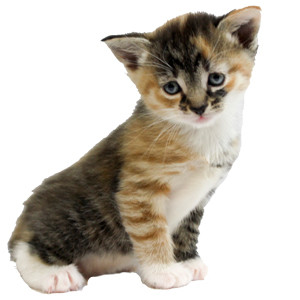 Wembley at twenty-two days old, showing fully extended ears and a sturdy posture.
Wembley at twenty-two days old, showing fully extended ears and a sturdy posture.
Day 23 Kitten: Time to Play!
Twenty-three-day-old kittens are in a prime stage for play. Playing is a crucial part of socializing kittens, teaching them positive ways to interact with both other cats and humans. Engaging in play with a twenty-three-day-old cat kitten kitten helps develop their social skills and physical coordination.
Get tips on socializing kittens at alleycat.org/Socialization.
 Wembley at twenty-two days old, showing fully extended ears and a sturdy posture.
Wembley at twenty-two days old, showing fully extended ears and a sturdy posture.
Week 4 Kitten: Exploring the World
Reaching one month old is a significant milestone. It’s amazing to see how quickly these once-helpless newborns have developed over just four weeks. Kittens like Darling, Denby, Corduroy, Tweed, and Wembley are now thriving babies, beginning to explore their environment and frequently playing with littermates and toys. A four-week-old cat kitten kitten is entering a phase of active learning and exploration.
 Corduroy at four weeks old, ready to explore his surroundings with curiosity and energy.
Corduroy at four weeks old, ready to explore his surroundings with curiosity and energy.
Week 5: Energetic Play and Personality in the Cat Kitten Kitten
Week five marks the start of truly fun interactions with kittens. Darling, now five weeks old, is full of energy and engages in exuberant play, really starting to develop his unique personality. This is when their sight is fully developed, leading to vigorous play, running, and exploring until they simply collapse for a nap. While experimenting with solid food, a five-week-old cat kitten kitten still nurses from their mother or is bottle-fed a few times daily. Human interaction becomes increasingly important at this age to foster socialization.
Want to learn more about engaging with and caring for kittens in their fifth week?
Visit our Kitten Guide for detailed advice
 Darling at week five, showcasing his boundless energy and playful nature.
Darling at week five, showcasing his boundless energy and playful nature.
Day 31 Kitten: Play and Socialization
Exuberant play at thirty-one days old leads to delightfully tired kittens. Play, both with littermates and with humans, is a crucial part of socialization. It helps thirty-one-day-old cat kitten kittens bond with each other and build confidence around people, setting the stage for positive social interactions.
 Darling at week five, showcasing his boundless energy and playful nature.
Darling at week five, showcasing his boundless energy and playful nature.
Day 32 Kitten: Human Interaction
By thirty-two days, kittens benefit greatly from frequent and gentle handling by people to encourage social development. Positive interactions, like love and play from humans, help a thirty-two-day-old cat kitten kitten associate people with positive experiences, which is vital for their future adoption into new homes.
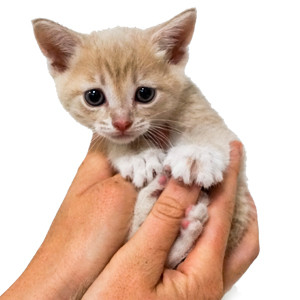 Denby at thirty-two days old, being gently handled by his caregiver, promoting socialization.
Denby at thirty-two days old, being gently handled by his caregiver, promoting socialization.
Week 5 Kitten: Individual Personalities Emerge
At five weeks old, kittens like Darling, Denby, Corduroy, Tweed, and Wembley begin to clearly demonstrate their individual personalities. Darling is proving to be quite vocal; Denby is always ready for adventure and a good wrestle; Corduroy is brave and confident; Tweed is sweet and loves belly rubs; and Wembley is a cuddly and mischievously silly five-week-old cat kitten kitten.
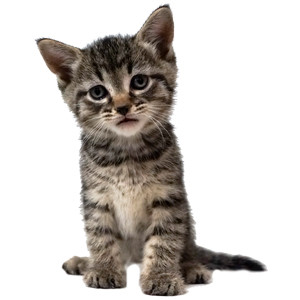 Corduroy at five weeks old, embodying bravery and confidence as his personality emerges.
Corduroy at five weeks old, embodying bravery and confidence as his personality emerges.
Week 6: Learning Boundaries and Self-Care for the Cat Kitten Kitten
By week six, Darling is becoming more self-assured through continued socialization and play. He is consistently using the litter box and eating cat food, although he still seeks out his mother for occasional nursing and comfort. Socialization remains paramount as kittens grow. Caregivers for six-week-old cat kitten kittens like Darling, Denby, Corduroy, Tweed, and Wembley start teaching them appropriate play, guiding them that human hands are not for biting or scratching.
Want to learn more about guiding kitten behavior and care during the sixth week?
Visit our Kitten Guide for detailed advice
Day 37 Kitten: Balance Achieved
At thirty-seven days old, kittens are no longer wobbly. They have found stability and use their tails to help balance, demonstrating improved motor control. This balance is crucial as they become more active and exploratory as thirty-seven-day-old cat kitten kittens.
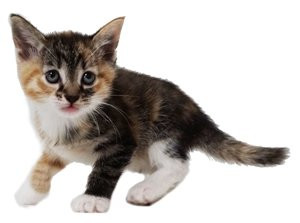 Wembley at thirty-seven days old, using her tail for balance, showcasing improved coordination.
Wembley at thirty-seven days old, using her tail for balance, showcasing improved coordination.
Day 40 Kitten: Instinctual Behaviors
By forty days old, kittens are engaging in classic feline behaviors like stalking, hiding, pouncing, and digging. These are instinctual behaviors ingrained in all cats, whether they are raised indoors or outdoors. Observing these behaviors in a forty-day-old cat kitten kitten is a joy and a sign of healthy development.
 Wembley at thirty-seven days old, using her tail for balance, showcasing improved coordination.
Wembley at thirty-seven days old, using her tail for balance, showcasing improved coordination.
Week 6 Kitten: Self-Grooming and Bonding
At six weeks old, kittens are now proficient at cleaning themselves, having learned grooming from their mother since birth. They also groom each other, reinforcing bonds between siblings. Incorporating grooming into interactions with a six-week-old cat kitten kitten, especially if it’s a single kitten or without its mother, is beneficial for bonding and hygiene.
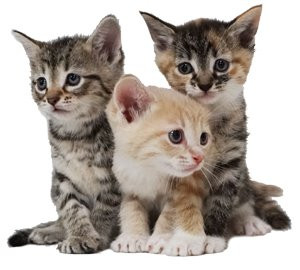 Tweed, Wembley, and Denby at six weeks old, engaging in mutual grooming, reinforcing sibling bonds.
Tweed, Wembley, and Denby at six weeks old, engaging in mutual grooming, reinforcing sibling bonds.
Week 7: Approaching Weaning and Social Expansion for the Cat Kitten Kitten
By week seven, Darling is almost fully weaned and continues to learn and play. Seven-week-old cat kitten kittens are nearing full weaning and remain highly active learners. Introducing them to new people, different areas of the home, and other pets is an important part of socialization at this stage. They are becoming quite self-sufficient, although kittens like Darling, Denby, Corduroy, Tweed, and Wembley still seek comfort from their mother.
Want to learn more about supporting kittens during their seventh week of development?
Visit our Kitten Guide for detailed advice
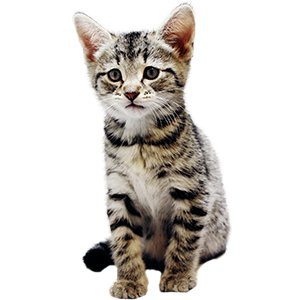 Darling at week seven, almost fully weaned and continuing to explore and learn.
Darling at week seven, almost fully weaned and continuing to explore and learn.
Day 45 Kitten: Adapting to New Experiences
As part of their ongoing socialization at forty-five days old, kittens are being introduced to various parts of the house, different objects, other pets, people, and new experiences. This exposure helps forty-five-day-old cat kitten kittens adjust to new situations and environments, building their adaptability.
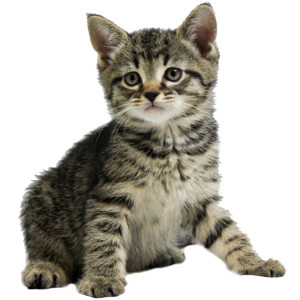 Corduroy at forty-five days old, curious and looking forward to exploring new experiences.
Corduroy at forty-five days old, curious and looking forward to exploring new experiences.
Day 47 Kitten: Routine and Training
At forty-seven days old, kittens have typically been introduced to scratching posts and had their claws trimmed for the first time. Training kittens to accept these routines early on helps prepare them for life in their future homes. A forty-seven-day-old cat kitten kitten is learning to adapt to human-led routines.
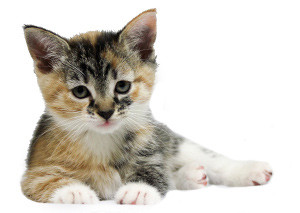 Wembley at forty-seven days old, comfortable with her grooming routine and claw trimming.
Wembley at forty-seven days old, comfortable with her grooming routine and claw trimming.
Week 7 Kitten: Independence Growing
Almost fully weaned from their mother, seven-week-old kittens are truly growing up! These little kittens are hitting their stride and becoming increasingly independent. A seven-week-old cat kitten kitten is rapidly transitioning into a more self-reliant phase.
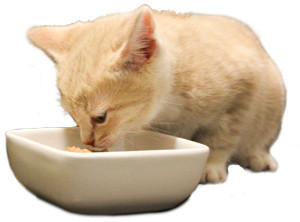 Denby at week seven, almost fully weaned and confidently eating regular food.
Denby at week seven, almost fully weaned and confidently eating regular food.
Week 8: Ready for Neutering and New Homes for the Cat Kitten Kitten
By eight weeks, Darling weighs enough to be neutered and is becoming more skilled and adventurous each day. At this stage, an eight-week-old cat kitten kitten is learning extensively from his mother, siblings, and human caregivers. Caregivers begin to seek adoptive homes for these eight-week-old kittens. Although fully weaned, staying with their littermates for a bit longer is beneficial for continued social and developmental growth, ideally delaying adoption for another couple of weeks.
Want to learn more about preparing kittens for adoption during their eighth week?
Visit our Kitten Guide for detailed advice
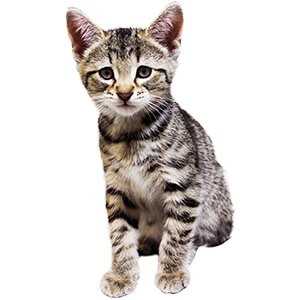 Darling at week eight, weighing enough for neutering and showing increased skill and adventure.
Darling at week eight, weighing enough for neutering and showing increased skill and adventure.
Day 54 Kitten: Eye-Paw Coordination
At fifty-four days old, kittens are at the height of their eye-paw coordination and play activity. This peak in coordination leads them to attempt more daring and complex feats during play. It’s wise to supervise them closely during this time to ensure their play area is safe for these budding daredevils and their fifty-four-day-old cat kitten kitten antics.
 Darling at week eight, weighing enough for neutering and showing increased skill and adventure.
Darling at week eight, weighing enough for neutering and showing increased skill and adventure.
Week 8 Kitten: Spaying/Neutering Age
At two months (eight weeks), kittens typically weigh around 2 pounds and are ready to be spayed or neutered. This is a crucial step in responsible pet ownership and helps manage cat populations. An eight-week-old cat kitten kitten is physically ready for this procedure.
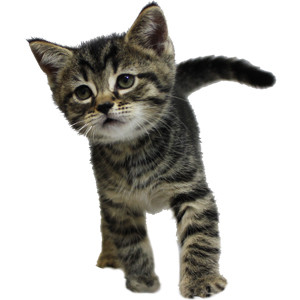 Tweed at eight weeks old, at the age where spaying or neutering is typically recommended.
Tweed at eight weeks old, at the age where spaying or neutering is typically recommended.
Week 9: Adult Behaviors and Eye Color for the Cat Kitten Kitten
By nine weeks, Darling looks quite grown-up! At this age, kittens behave and use body language much like adult cats. Darling is now eating entirely solid food, and his eye color has transitioned from blue to yellow. A nine-week-old cat kitten kitten is exhibiting mature feline behaviors. By nine weeks, kittens are clearly showing attachment to their caregivers, enjoying cuddles and seeking attention.
Want to learn more about the social behaviors of kittens in their ninth week?
Visit our Kitten Guide for detailed insights
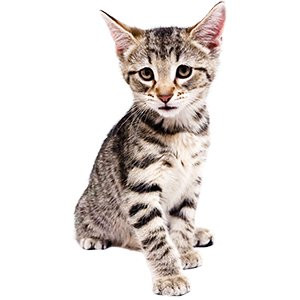 Darling at week nine, looking grown-up and behaving more like an adult cat.
Darling at week nine, looking grown-up and behaving more like an adult cat.
Day 57 Kitten: Adult Eye Color Confirmed
At fifty-seven days old, their adult eye color is clearly visible. Darling, Denby, Corduroy, Tweed, and Wembley all now have yellow eyes, a definitive marker of their maturing development. The eye color of a fifty-seven-day-old cat kitten kitten is now permanently set.
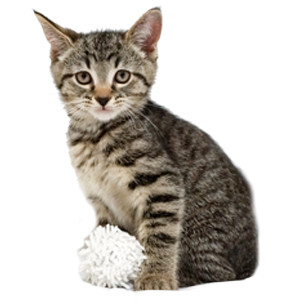 Corduroy at fifty-seven days old, showcasing his permanent yellow eye color.
Corduroy at fifty-seven days old, showcasing his permanent yellow eye color.
Day 60 Kitten: Growth Slows
As they approach two months, and start to look more and more like adult cats, the kittens’ rapid growth rate finally begins to slow down. While they will continue to develop muscle tone and refine their agility, they will no longer be doubling their weight in short periods. A sixty-day-old cat kitten kitten is transitioning from rapid growth to steady maturation.
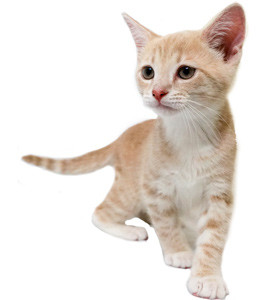 Denby at sixty days old, starting to resemble a more adult cat as his growth rate slows.
Denby at sixty days old, starting to resemble a more adult cat as his growth rate slows.
Day 62 Kitten: Regular Schedules
By sixty-two days old, kittens are settling into more predictable schedules, sleeping and eating at regular intervals. They primarily eat solid food, and if nursing was still occurring, it’s likely almost completely ceased. Similarly, bottle-feeding should be entirely discontinued by this stage for a sixty-two-day-old cat kitten kitten.
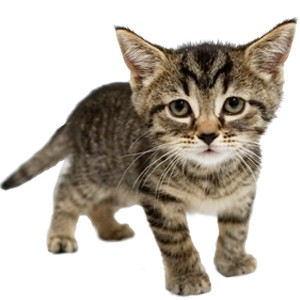 Tweed at sixty-two days old, still seeking comfort from mom but mainly eating solid food independently.
Tweed at sixty-two days old, still seeking comfort from mom but mainly eating solid food independently.
Week 9 Kitten: Adult Cat Behaviors
At nine weeks old, kittens are exhibiting the full range of behaviors seen in adult cats, using their body language to communicate effectively with their caregivers and each other. A nine-week-old cat kitten kitten is essentially acting and communicating as a mature feline in miniature form.
 Tweed at sixty-two days old, still seeking comfort from mom but mainly eating solid food independently.
Tweed at sixty-two days old, still seeking comfort from mom but mainly eating solid food independently.
Week 10: Ready for Adoption and Loving Homes for the Cat Kitten Kitten
By week ten, Darling is fully weaned, neutered, and, because he has been well-socialized, ready to go to his loving adoptive home. Ten-week-old cat kitten kittens are fully prepared for their transition to new families. It’s bittersweet to say goodbye to these adorable kittens, but Darling, Denby, Corduroy, Tweed, and Wembley are now fully weaned, socialized, spayed or neutered, and have all found loving adoptive homes. Saying goodbye to kittens is always tough—they grow up incredibly fast!
Want to learn more about the final stages before adoption in a kitten’s tenth week? Visit our Kitten Guide for detailed insights
Darling Corduroy 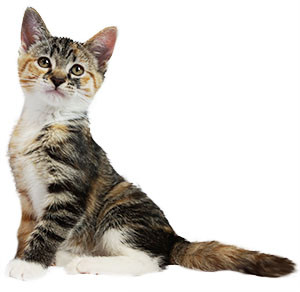 Wembley
Wembley
